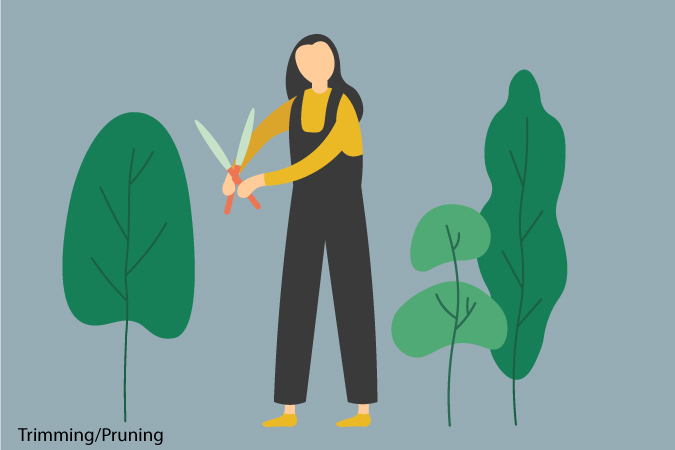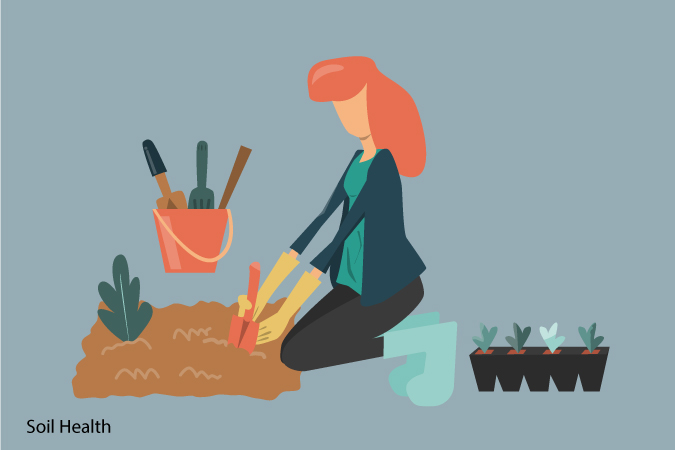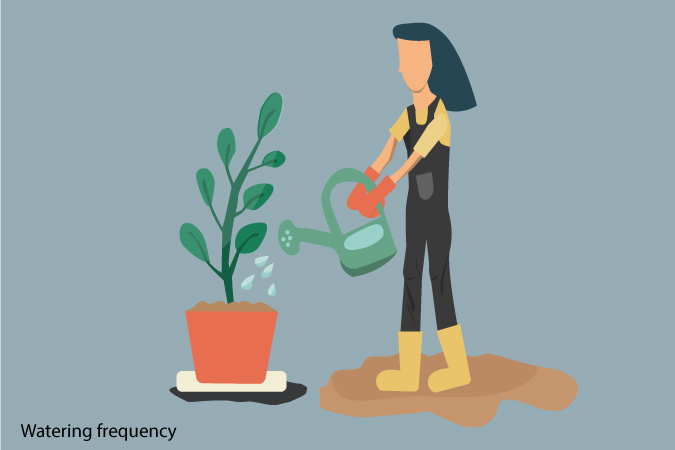It’s not a known fact but monsoon is actually a good time for home gardens – the air has ample heat, moisture, and humidity, ideal condition for any plant to thrive. This is also the time when plants get natural nourishment in the form of rainwater, and thus grow and bloom quicker than usual. Although, monsoon is also the time when your garden needs extra care and protection from water clogging (which can lead to mosquito breeding as well), unwanted weeds, pests, fungus, rotting roots and algae. Here are some ways you can ensure your garden stays healthy and beautiful in the rains and throughout the year:

Trimming/Pruning
If you have long branches, chances are the heavy winds may blow them away or cause a wreck your entire garden. Trim the branches, and get rid of dry or dead leaves, and any extra growth that may have happened. Pruning and trimming plants at the start of the season will boost flower budding and prevent wild growth.
Cut off flowers from their stem if they start to wither. Hedging, choosing stems or damaged leaves for selective cropping of foliage will make your garden look neat and helps fresh shoots to grow stay nourished with air, sunlight and minerals.
There are different methods of pruning for various types of plant:
• Flowering plants – Deadheading (cut off the heads of the stems for new buds)
• Shrubs – Hedging (cutting according to the shape required like oval, triangle etc)
• Grass – It starts growing long so it is mowed closest to the ground.

Good Drainage system
Waterlogging can cause rotting and fungus if proper drainage is not maintained. Make sure that the drainage holes of your planters are not clogged. Remove the plant saucers and keep the planters on a stand to ensure that the excess water is completely drained off. Clogged water also attracts insects, pests, worms which can ultimately damage the plant. It also helps mosquitoes in breeding.

Soil Health
It is essential to use a well-draining soil mixture while planting or repotting. Using natural fertilizers - eggshells, tea bags and other kitchen waste for the process of composting. This will enrich the soil and keep the garden replenished. Mix coco-peat, sand and other soil minerals with the regular garden soil to make it well-draining.
Look for weeds in your garden and keep on removing them as they will just use the share of nutrients of your plants and hamper the growth of the plants.

Pest Control
Insects and pests are a common problem during monsoon as rainwater and wind brings along these unwanted guests who can eat away all your plants or encroach upon the nutrients in the soil. We would recommend using organic pesticides like neem oil and turmeric. Spray neem oil on each part of the plant and sprinkle turmeric powder on the top layer of soil to avoid fungus.

Watering frequency
Watering should be done carefully especially during monsoon as there is enough moisture in the atmosphere. Water only if the soil gets completely dry and your plants start wilting - yellowing of leaves is a sign of wilting.
Harvest rainwater and use that instead of tap water to water the plants. Rainwater carries micro-nutrients like copper, iron, zinc and magnesium, which are beneficial for plants.

Change in setting
There are some plants that blossom particularly well during the rainy season, but some wither away due to the harsh wind and excess moisture in the air. Use perforated sheets as shades to protect plants that are young or the ones that are not meant for monsoon. If space permits you may also shift these plants indoors and move them back when the sun is out. Adequate shade also prevents soil erosion. Check with your local nursery on which of your plants cannot endure harsh weather conditions.